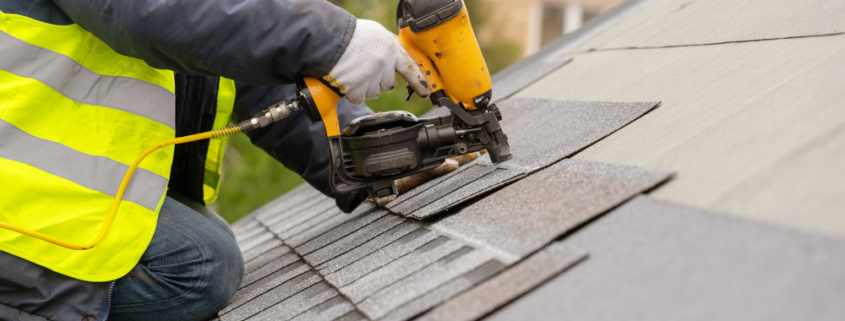Keeping Roofers Safe – OSHA Regulations for Rooftop Work
If you work on roofs as part of your job, you are employed in a dangerous profession. While skilled labor is necessary to install, inspect, maintain, and repair roofs, accidents and injuries happen with regularity. But there are safety standards in place to reduce risks and lower accident rates.
The Occupational Safety and Health Administration (OSHA) has established a variety of safety standards that apply to rooftop work. Here’s why these regulations are necessary and a list of many of the OSHA standards that apply to roofers.
Roofing Accidents and Injuries Are Far Too Common
Roofing accidents are a serious issue in the United States. Each year, approximately 100 roofers die in work-related accidents, making it one of the most dangerous occupations in America.
According to the Bureau of Labor Statistics (BLS), the rate of injuries for roofing contractors in 2021 was around 3.6 for every 100 full-time workers, an increase from 3.3 just one year prior. In one year alone, roofers sustained over 5,900 nonfatal injuries, such as fractures, sprains, strains, and muscle tears.
OSHA Regulations for Rooftop Work to Keep Roofers Safe
The above statistics are a stark reminder of the dangers of rooting work. They also highlight the importance of proper training for roofing workers and safety measures in this industry, as well as the need for employers to take responsibility for the welfare and safety of their workers.
Fortunately, OSHA has created many safety standards that apply to roofers. Here are several essential safety requirements for this type of work:
1. Fall Protection
According to OSHA’s roof fall protection standards, there must be fall protection in place when roofers are working at heights six feet or more above another level on a construction site or four feet in other industries. When exposed to these heights, the standards for rooftop protection include:
- Safety net systems
- Guardrail systems and safety railings
- Personal fall protection systems
- Metal roof fall protection
There is no minimum height if employees are working over any dangerous machinery, equipment, or other hazards. Safety measures must be used. Also, OSHA defines what type of fall protection is required based on the type of roof and how close workers are to the roof’s edge.
2. Ladder & Scaffolding Safety
Ladders and scaffolding provide workers with a convenient way to access upper work levels. But these materials can also be sources of serious injuries. Employers must train workers on how to safely use ladders and recognize common hazards, such as keeping areas around them clear.
OSHA requires that scaffolding be designed by a qualified person and only erected and moved by trained workers. Employers must provide safe scaffold access and provide guardrails if the structure is more than 10 feet above a lower level.
3. Roofing Materials Handling
OSHA requires that materials for roofing work should be kept in a convenient place for workers. For example, carpentry roofing materials should be placed near the roof, and other materials should be stored no further than six feet from the roof’s edge. Materials should also be stored so they don’t create a risk of injury to any workers.
4. Electrical Safety
Many roofers are exposed to overhead powerlines while working, which is a serious electrocution hazard. According to OSHA, employers must protect all workers from these types of risks by grounding, de-energizing the circuits, or guarding them using insulation.
Many workers also use power tools like nail guns and saws to perform their jobs. OSHA requires that these tools have the proper safety attachments and that workers be adequately trained in their use.
5. Personal Protective Equipment
Employers have a duty to protect workers from common and recognized workplace hazards. When a hazard cannot be eliminated, OSHA requires that employees wear Personal Protective Equipment (PPE). Roofing workers should be provided with and trained in the use of various PPE such as eye protection, hearing protection, proper footwear, work gloves, and fall arrest or fall restraint equipment.
6. Weather Hazards
Workers are required to monitor weather conditions and stop rooftop activities if the conditions are unsafe. Some hazardous conditions that may qualify include rain, snow, and heavy wind. Workers must also have the proper training and equipment to deal with extreme cold and heat conditions and only work when safe.
Have You Been Injured in a Roofing Accident?
If you or a loved one has been hurt doing rooftop work at the direction of an employer, it’s possible that OSHA regulations were not followed. Most employers in the U.S. are subject to OSHA’s standards and ignoring them can lead to catastrophic results for workers and their families. If you’d like to learn more about OSHA’s roofing standards and your rights after an accident, OSHA Injury Attorney can help.

 Keeping Roofers Safe - OSHA Regulations for Rooftop Work
Keeping Roofers Safe - OSHA Regulations for Rooftop Work Extreme weather events are not only costly for homeowners and businesses, they also present an ongoing challenge for cleanup crews.
Extreme weather events are not only costly for homeowners and businesses, they also present an ongoing challenge for cleanup crews. The idea of psychological safety at work has begun to receive more attention in recent years. Here’s what that means and the benefits of making it a priority for workers.
The idea of psychological safety at work has begun to receive more attention in recent years. Here’s what that means and the benefits of making it a priority for workers.
Leave a Reply
Want to join the discussion?Feel free to contribute!